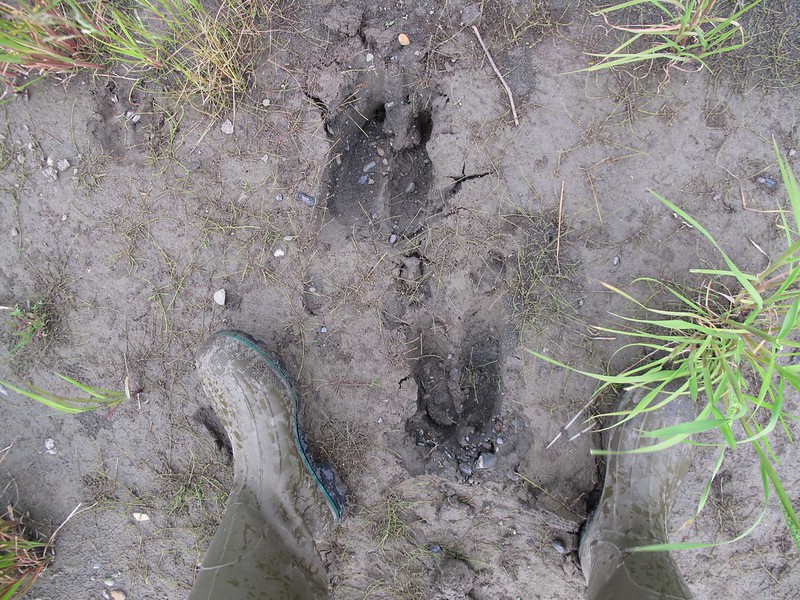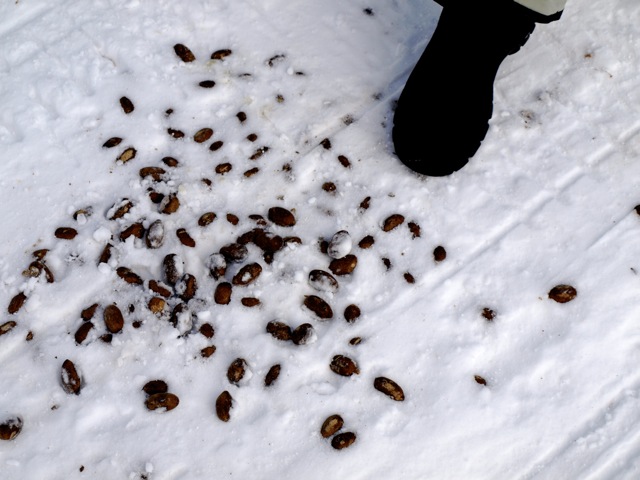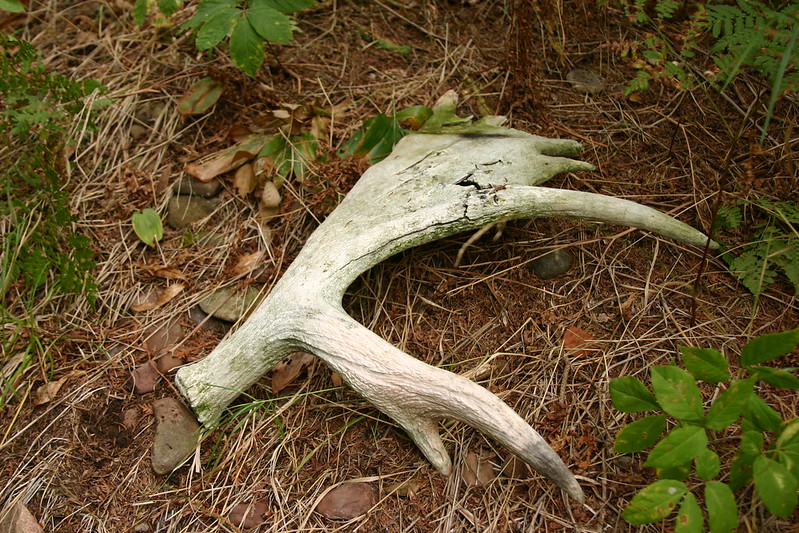If there’s one animal that is the face of the Boundary Waters, it is the moose.
Weighing over 1,100 lbs and standing six feet tall at the shoulder, the North American Moose is the largest mammal of the BWCA. These majestic creatures are said to have migrated to North America from Siberia just 70,000 years ago and are the icon of Minnesota Northwoods.
“Seeing a moose in the wild is like a spiritual experience,” said Jordan Mogck, a dad of five who recently brought his two oldest sons on their first Boundary Waters paddle adventure. While driving his car back to the entry point, he saw another car stopped on the side of the road with some people outside with cameras.
“That’s always a good sign that there is some wildlife nearby. So I pulled over and got out,” Mogck said.
“Sure enough, there was a moose in a swamp just off the road doing its thing. It was pretty far away and didn’t seem affected at all by its audience. Unfortunately, my sons didn’t see it. But the fuzzy pictures I took ensured that they believed my story.”
So, can you see wild moose in the Boundary Waters? Yes! But it is somewhat rare due to their elusive nature and small-ish population numbers. This article will aim to educate you so you have the best chance of seeing a moose on your next Boundary Waters trip.
Tips on observing wildlife in the BWCA
As a dad to five children, I am quick to communicate that the magic of the Boundary Waters’ wildlife is that it is wild. We aren’t to interfere with any of the animals we encounter (unless of course, it’s a bear eating our food).
Photos can (and should!) be taken but from a safe distance. That said, these animals often move fast and certainly hear, and smell us before we get a glimpse of them. If you are wrestling with a camera, you’re prone to miss the moment altogether. Sometimes it’s best to just soak in the moment with all your senses.
Some of the mammals in the BWCA lack good eyesight but have a great sense of smell. So if you hear a rustling in the woods, stay still and silent and simply watch. Some creature may come out into the open or even right by you. They will certainly smell your presence but if you remain still they won’t perceive you as a threat.
Looking for animals outside of the heat of the day (particularly early morning or late evening) will afford you some good opportunities to see creatures feeding or foraging.
But my biggest piece of advice (constantly repeated to my kids) is to travel quietly if you want to see something.
How many moose live in the Boundary Waters?
The moose population in the BWCA has been stable over the past several years but is still less than half of the highest recorded population in 2006 at 8,840.
The DNR estimates there to be somewhere between 3,440-6,780 moose in the area. The stability is a good sign after such a drastic fall in moose numbers. However, moose remain at risk due to low reproductive success and the parasitic brain worm that affects them.
What do moose tracks look like?
Moose tracks look much like deer tracks (or other animals in the deer family, for that matter) but are much larger. Find 5-6 inch long cloven hoof tracks and you’re likely looking at evidence of a moose.
You can really impress your group by determining the direction your moose friend has traveled. If you’re lucky enough to find deep tracks of both front and rear feet, you can determine which direction the moose has gone by looking at the direction of the dewclaws (which are the non-weight-bearing hooves on the rear of the foot).
Look for moose tracks in muddy or marshy areas near water (or a previously wet portion of a portage).

What does moose poop look like?
Moose scat varies in consistency based upon the season, but if you’re traveling the Boundary Waters during paddle season, you’re likely to see moose poop in its runnier form. Unlike deer whose droppings tend to be pellets year-round, moose poop in the Spring and summer tends toward the likeness of a cowpie (or even more runny).
The reason for softer moose droppings is due to a change in diet from winter to spring. In winter, moose subsist on twiggy and dry forage. This results in large pellet-like droppings. But when new plant growth emerges in the spring, moose switch to eating grasses and green leaves which loosens up their stool.
A summer moose dropping may be confused with bear scat.
One good way to determine if it is moose poop or if it belongs to a bear is to take a twig and dig into it (really). Because a moose is a ruminant (like a cow), it chews its food then regurgitates it and chews again. This results in a uniform consistency and hardly any remaining twig or leafy material. Whereas bears have digestive systems closer to humans and will pass through food material that doesn’t break down in the body.

Can you find moose antlers in the BWCA?
There’s nothing like finding the shed crown of a bull moose in the wilderness. Bull moose grow antlers every year during the spring and summer, then drop them in the late fall or winter. You can often tell how old a bull moose is by the size of the antlers (a healthy bull will grow increasingly larger antlers each year).
Are you allowed to take moose antlers home from the Boundary Waters?
If you’re lucky enough to come across a shed moose antler in the Boundary Waters, it is technically legal to bring it home with you (if you’re willing to add the extra weight!). But while it is technically legal, you may encounter other paddlers who look down upon the practice in terms of Leave No Trace principles, which states “take only pictures, leave only footprints.”
Personally, I do not have a problem with taking moose sheds out of the BWCA. If left, they are quickly broken down by mice and other critters.

Where can you see moose in the Boundary Waters?
You’ll see them in marshy areas or in shallow depths of lakes taking a dip. They eat wild rice and water lily. I have only seen moose on a couple of occasions in the Boundary Waters and each time it is a treat. For me, it has been from quite a distance but that helped facilitate a longer observation (because it wasn’t scared off).
Plus, if you see evidence of a moose, you can bet that it’s being tracked by Boundary Waters gray wolves.
